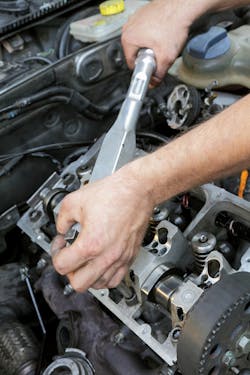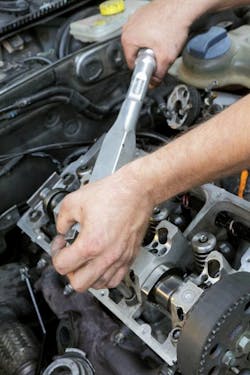It is easy to take the basics for granted. And it’s a mistake. A surprisingly common one, too. The problem is that, over time, a “mastered” skill or set of knowledge becomes less than it was.
It's not just that there’s a risk that this will happen—it’s a certainty. Safety trainers have recognized this problem for a long time and have advocated for such things as toolbox talks, weekly safety meetings, and expiration dates on specific types of safety training.
This gives rise to a question. Why isn’t every electrical firm and maintenance shop applying the safety trainers’ solution to basic skills and basic knowledge? One reason given is that people are using the basic skills and knowledge every day. But this reason does not account for the reality that errors creep in, and then that daily practice reinforces misunderstandings, misconceptions, and incorrect methods.
What happens is similar to the way a knife loses its edge through use. It still cuts, but it needs the occasional sharpening.
Even the most capable people are at risk for this. Their high competence can lead to high overconfidence. Consider the case of the oval track race team led by a man who prided himself on his “calibrated arm.” He had worked as the chief mechanic at a large dealership, and made a lot of money on bets that he could accurately torque bolts without a torque wrench.
So good was he at this that he stopped using torque wrenches. What he didn’t seem to realize is that everything drifts out of calibration sooner or later. His arm was no exception.
His team’s driver was leading the pack, coming into the third turn of the final lap. What excitement! Then the engine blew a head gasket, taking that car out of the race. So close, but so far away. The post-mortem showed inconsistent tightening of the head bolts as the cause for the failed head gasket.
OK, so you’re not racing cars, and you do use torque wrenches. Fair enough. But the same kind of thing happens in electrical work all the time. For example, Jim goes through training on cable-pulling. He learns all about proper lubrication, pulling angles, pulling speed, and pulling tension. At first, he does things “by the book.” But he is so good at this, he starts doing things by feel (there’s that calibrated arm mentality again).
A particular pull comes along, and it’s a bit challenging. Jim applies more pull, exceeding the limit for that cable. The insulation damage is minor, but there. Jim gets away with it this time.
Over time, that boundary of pull pressure steadily creeps forward. Jim is experienced. He knows what he’s doing. Or so he tells himself. Those cable faults that occur long after he’s gone on to another project or three don’t get correlated to Jim’s over-pulling. “It must be random chance, because, after all, we had our most experienced cable puller on that job.”
So that’s one way experience can be the enemy of good performance, even on a basic task. Another way occurs when we do the task so often, we stop thinking about it. We put our brains in automatic mode and just do it. We stop paying attention, and that’s when mistakes happen.
Rather than let experience degrade basic skills, build on it to keep people sharp. Does this mean you should send your experienced people through the same training that your inexperienced people get? No. There are other ways that cost less and are probably much more effective.
For example, you can have your experienced people train others who are less experienced. This produces a “teach the teacher” effect, especially if those doing the training are formally accountable for getting the material right.
Here are three modalities for that:
• One to everyone. Think back to that racing team. What if that head mechanic had been tasked with teaching something about torque wrench use to the rest of the racing crew, every month? Would his attitude have been different?
• One to a crew. What if Jim had been tasked with making sure everyone else knows the rules on cable pulling and why they should be followed? Maybe instead of teaching a class to the whole shop, his teaching method is to review the material with his own crew before they do their first cable pull on that job? And every crew has a designated “Jim” whose job it is to do this?
• One on one. This is a traditional approach for OJT, and it follows the “master/apprentice” model. One problem is in how it’s done. The person in the role of master typically wings it. Design a structured approach for people in the “master” role to use. Ideally, this will include some background theory and hands-on demonstration by first the teacher and then the student.
Keeping basic skills and knowledge intact is clearly important. The good news is that doing so takes only a small investment of training time. If the experienced people do the training, they get a refresher and get the satisfaction of helping ensure that everyone is getting the small things right.
About the Author

Mark Lamendola
Mark is an expert in maintenance management, having racked up an impressive track record during his time working in the field. He also has extensive knowledge of, and practical expertise with, the National Electrical Code (NEC). Through his consulting business, he provides articles and training materials on electrical topics, specializing in making difficult subjects easy to understand and focusing on the practical aspects of electrical work.
Prior to starting his own business, Mark served as the Technical Editor on EC&M for six years, worked three years in nuclear maintenance, six years as a contract project engineer/project manager, three years as a systems engineer, and three years in plant maintenance management.
Mark earned an AAS degree from Rock Valley College, a BSEET from Columbia Pacific University, and an MBA from Lake Erie College. He’s also completed several related certifications over the years and even was formerly licensed as a Master Electrician. He is a Senior Member of the IEEE and past Chairman of the Kansas City Chapters of both the IEEE and the IEEE Computer Society. Mark also served as the program director for, a board member of, and webmaster of, the Midwest Chapter of the 7x24 Exchange. He has also held memberships with the following organizations: NETA, NFPA, International Association of Webmasters, and Institute of Certified Professional Managers.

